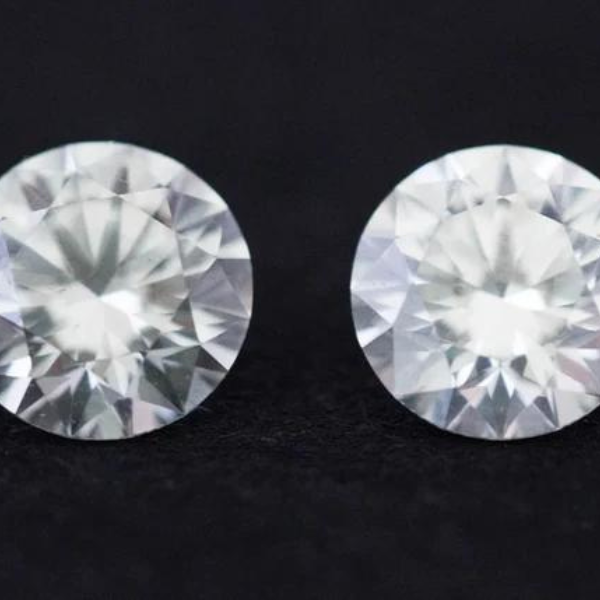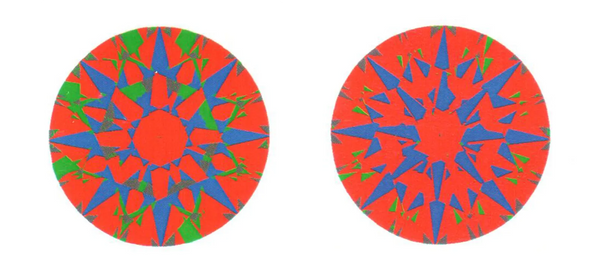
You’re sitting in your 5rd grade science class when a glint of sunlight makes its way from the window to a triangular paperweight on your teacher’s desk. Mysteriously, almost magically, the sunlight is cracked apart and lays its raw colors on the wall. To look at a prism, all you see is a clear pyramid. To understand why one color is splashed into a spectrum, requires some science.
This angular wizardry is going on inside of a diamond, too. An experienced craftsman takes a rather dull looking lump and cuts it just right. Cut it too shallow, and light slips through the bottom. Cut it too deep, and it takes a bounce and heads for the side door. When the light gets away, the diamond never gets a chance to throw back a jaw-dropping flash. And that’s what you want.
 AGS 000 Ideal Cut Diamond (Left), Shreve & Co. Fire & Ice Excellent Cut Diamond (Right)
AGS 000 Ideal Cut Diamond (Left), Shreve & Co. Fire & Ice Excellent Cut Diamond (Right)
When looking at hard numbers like cut, carat weight and clarity, you’re only getting part of the story. Grading systems can tell you certain things about a diamond according to laboratory calibrations, but what it cannot tell you is how striking a diamond is going to be. There’s just no way to certify the nuanced dance the light will do.
Take a look at the two diamonds above. On the left, is a one carat AGS 000 ideal cut diamond – one that if you only looked at the numbers would be perceived as “perfect” but it doesn’t show up as bright and white as the one on the right. The other diamond is a one carat Shreve & Co.’s Fire and Ice excellent cut diamond which is engineered to reflect more light back to the top than any other diamond on the market. In every way, the AGS 000 has higher grades than the Fire & Ice but it doesn’t appear that way because the cut of the AGS 000 allows too much light to escape before reaching the crown.
 AGSL Computer Generated Light Performance Map (AGS 000 on the left, Fire & Ice on the right). The red represents the brightness of the diamond.
AGSL Computer Generated Light Performance Map (AGS 000 on the left, Fire & Ice on the right). The red represents the brightness of the diamond.
A smaller, well cut diamond can act like a beacon on your finger. A large, poorly cut diamond will just sit there looking unremarkable. The most important certification a diamond can have is the one that comes from your own eyes. Make no mistake, our diamonds get high marks on the technical spreadsheet. We’ll proudly show you all the stats you want.
But, ultimately, the beauty of a diamond comes from the way the artist cuts it. He’s working on something miniscule. Adjusting angles by hand that can barely be measured. But, when it’s ready and right, all it takes is the flicker from a candle to pop fireworks from your finger.
You are the final judge. The last arbiter to decide if the diamond will have the honor of resting atop your hand. A diamond is something to see in person. Something to be graded by your pulse. No microscope or loupe needed. You’ll know from ten tables away you have the right diamond.


